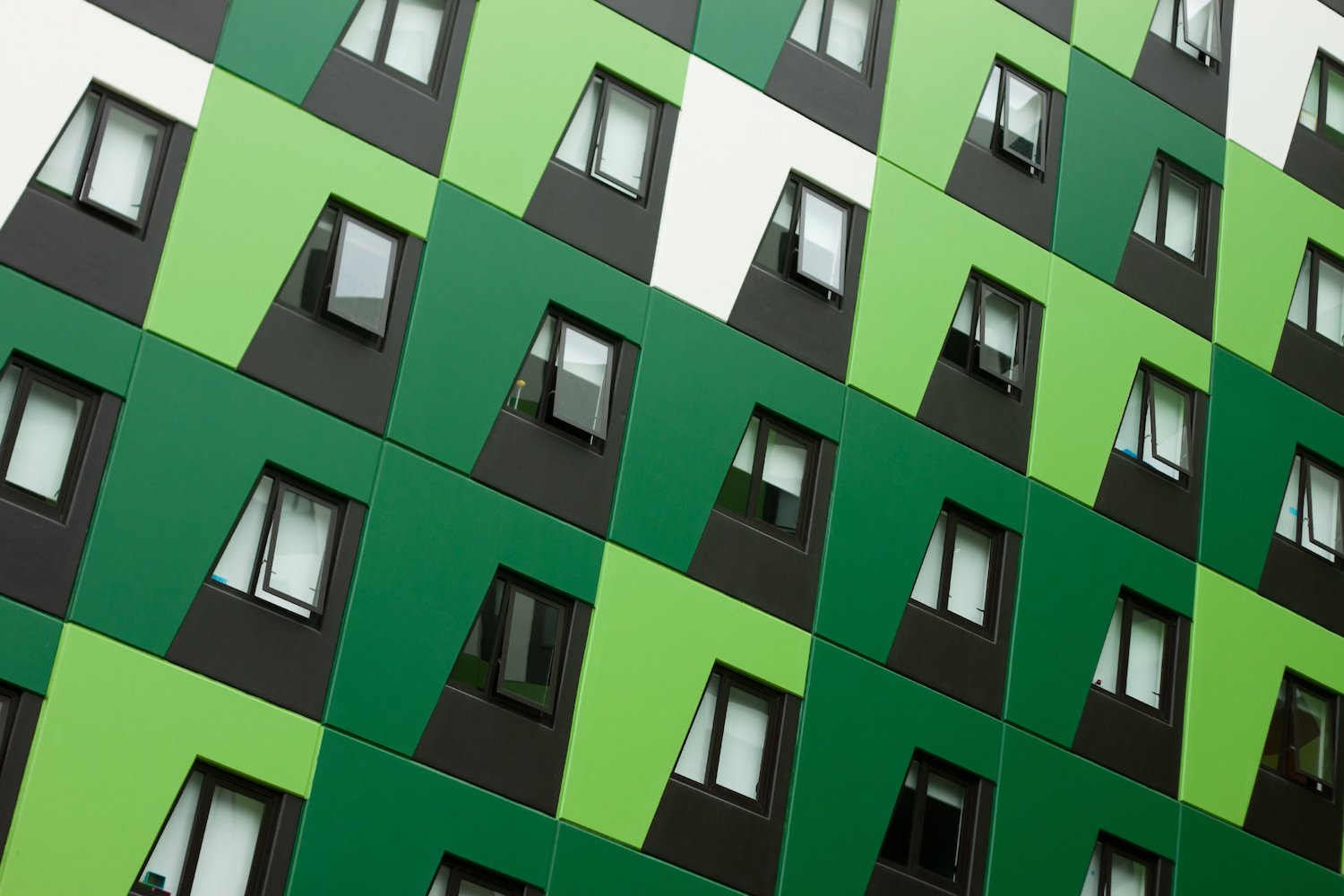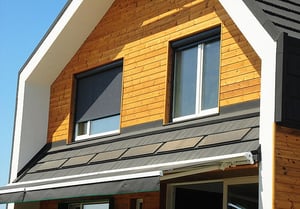
The UK government is consulting on proposed updates to the UK building regulations on energy efficiency (Part L) and ventilation (Part F). Atamate welcomes more...
They should be! It is the 21st Century after all. With all the talk about the environment and sustainability and meeting targets to save the Earth, building homes that are conducive to reducing our carbon footprint is the very least we can do. Not to mention saving those vital pennies.

Before we look at some low energy building techniques, let’s take a step back to make sure we’re all on the same page as to what we’re looking for when we talk about low energy building design. In fact let’s take several steps back to man’s first home - caves. Caves were great, they provided a place to keep our newly made tools, protection from the odd dinosaur and, possibly most importantly, shelter from the weather. We’d build a fire to warm the cave, but most of the heat would be lost to the gaping hole at the entrance. And to be honest, the majority of the homes we currently live in haven’t improved that much. We spend an incredible amount of money to heat our homes only to lose a good portion of it through poorly insulated walls, doors, windows and especially the roof.
Is the answer to roll a massive stone over the mouth of the cave? Have airtight insulation and keep all that precious heat in? I’m sure our ancestors tried it - then promptly moved the stone as the cave filled with smoke. Ventilation was essential and still is, regardless of the type of heating we employ. High humidity leads to damp walls, leads to rot, leads to an unhealthy, cold environment that requires more heat to feel warm and so the energy waste continues.
A chain is only as strong as its weakest link. This rings incredibly true with building design as thermal bridging is another major contributor to heat loss.

Heat, like many of us, will take the path of least resistance. Where a temperature difference exists between your home and the external environment, the heat will find the most conductive material and either travel outwards (in the winter as it’s colder outside) or inwards (in the summer where it’s cooler inside), yes, the opposite to our requirements.
All three areas affecting the energy levels of a new build; fabric, ventilation and thermal bridging can and should be controlled at the beginning. Before adding mortar to brick, these issues need to be addressed by putting pen to paper. As there are so many variants to consider and apply, low energy building design principles are covered in the government issued building regulations, in particular Approved Document L1A (for new buildings as opposed to L1B which is for existing buildings ) where practical guidance is given for low energy building definitions, techniques and materials.
Following the UK Building Regulations to the letter ensures all new builds have the same minimum starting point when it comes to the conservation of fuel and power and also where it comes to the efficiency and control of any fixed building services (i.e. heating, light etc). Regulatory rates have been set for CO2 emissions and Fabric Energy Efficiency and these must be complied with. The SAP report is part of the measuring process to ensure the standards have been met.
 Making a slow but sure sweep across Europe and the US is a voluntary standard called Passivhaus. It originates from Germany with Scandinavian roots. For Passivhaus to be successful it must be fully embraced by the architect as in order to obtain the Passivhaus stamp of approval a build must have low heating and cooling requirements and extremely low leakage levels. Passivhaus buildings tend to be solar powered and highly insulated. It’s important to note that following this route can increase the cost of construction by 5 - 10% and while savings are garnered through the low cost of heating the property, the savings may not necessarily be harvested by the person or company footing the bill if the property is to be sold on completion. Could this be the factor behind the slow uptake?
Making a slow but sure sweep across Europe and the US is a voluntary standard called Passivhaus. It originates from Germany with Scandinavian roots. For Passivhaus to be successful it must be fully embraced by the architect as in order to obtain the Passivhaus stamp of approval a build must have low heating and cooling requirements and extremely low leakage levels. Passivhaus buildings tend to be solar powered and highly insulated. It’s important to note that following this route can increase the cost of construction by 5 - 10% and while savings are garnered through the low cost of heating the property, the savings may not necessarily be harvested by the person or company footing the bill if the property is to be sold on completion. Could this be the factor behind the slow uptake?
 Another voluntary standard driven by the needs of the consumer has been developed by BRE (Building Research Establishment) with a sole focus on new homes and extensions built in the UK. The Home Quality Mark is an award for the use of consumers, estate agents and a tool for developers to show that a new home is not only built for quality but for the future. It takes homes to the next level in low energy standards. HQM covers numerous areas, including resilience to changes in climate and lifestyle, reduction in CO2 emissions and low energy bills. Assessments are carried out by independent professionals usually at the request of the developer and it allows the developer to prove that what they’ve stated about the property is correct and not just page fillers for their promotional material. The Home Quality Mark is what it says on the bottle - The sign of a better home.
Another voluntary standard driven by the needs of the consumer has been developed by BRE (Building Research Establishment) with a sole focus on new homes and extensions built in the UK. The Home Quality Mark is an award for the use of consumers, estate agents and a tool for developers to show that a new home is not only built for quality but for the future. It takes homes to the next level in low energy standards. HQM covers numerous areas, including resilience to changes in climate and lifestyle, reduction in CO2 emissions and low energy bills. Assessments are carried out by independent professionals usually at the request of the developer and it allows the developer to prove that what they’ve stated about the property is correct and not just page fillers for their promotional material. The Home Quality Mark is what it says on the bottle - The sign of a better home.
So where does that leave us? Are new build homes eco residential low energy homes? Those compliant with current L1A regulations are at an optimal level of energy emittance, but there’s still plenty of room for improvement. As building owner/designer the responsibility and decision lies with you as to how far you’re willing to take it. The decision should be made as to how high you are willing to make the initial outlay in order to obtain the low energy returns with years and years of minimal energy bills and the knowledge that you’re going above and beyond to save our planet! And now with the introduction of the Home Quality Mark you’ll be able to give independent, evidence based proof that you’ve done what you set out to do - applied low energy building design principles with thoughtful use of materials, design and techniques.

The UK government is consulting on proposed updates to the UK building regulations on energy efficiency (Part L) and ventilation (Part F). Atamate welcomes more...